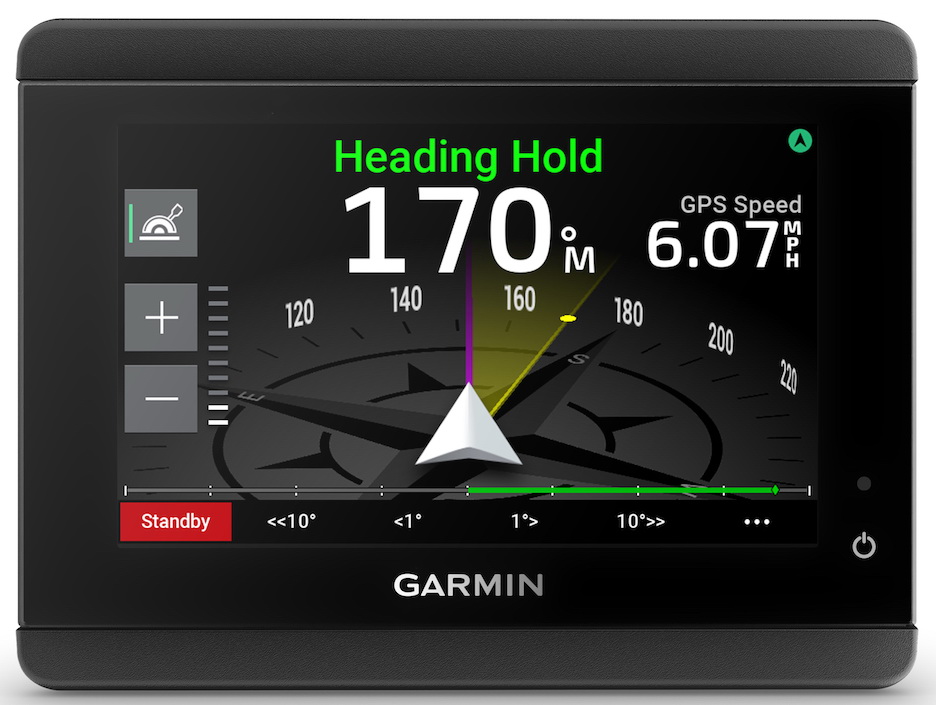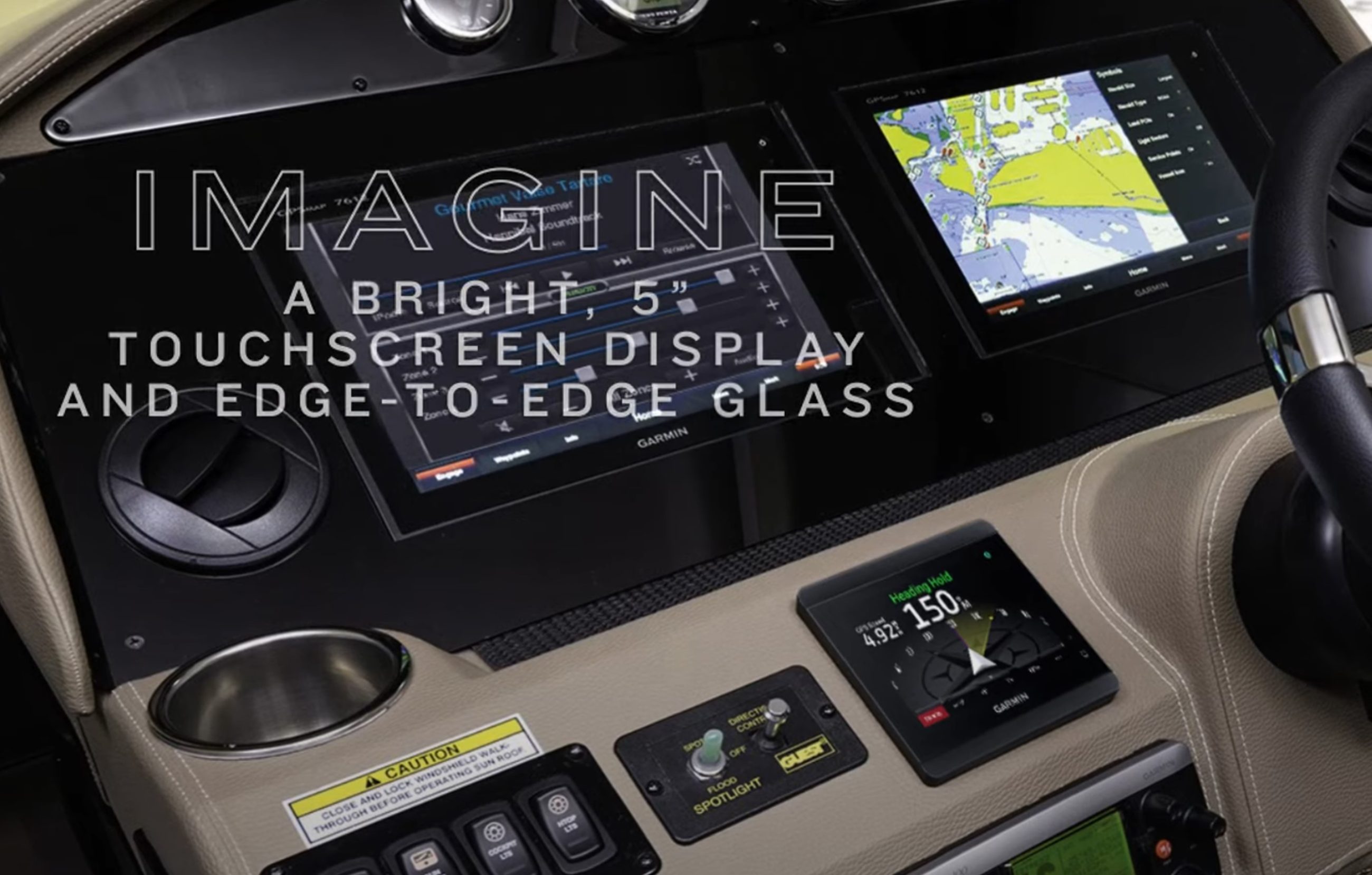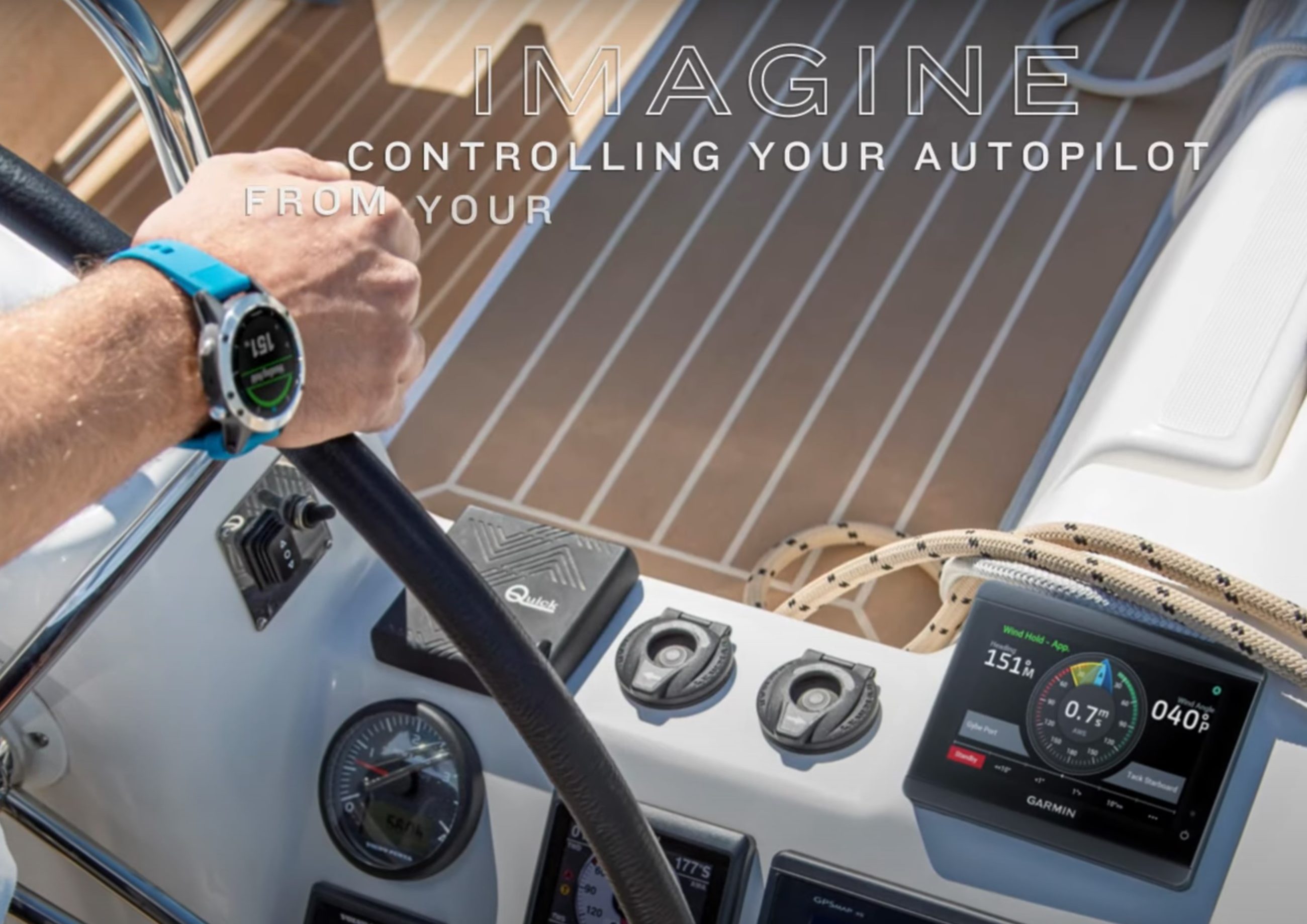Garmin bolsters award-winning Reactor marine autopilot series with new GHC 50

Featuring a new bigger and brighter edge-to-edge glass design
OLATHE, Kan., June 1, 2022/Business Wire – Garmin International, Inc., a unit of Garmin Ltd. (NYSE: GRMN), the world’s largest and most innovative marine electronics manufacturer, today announced the GHC 50, a bright 5-inch touchscreen autopilot display designed for easier control and readability of its award-winning GHP Reactor autopilots. With a premium industrial design and edge-to-edge glass display, the GHC 50 seamlessly integrates with Garmin multifunction displays (MFDs) to create a sleek and stunning look for any helm.
“We’re excited to continue to enhance the tried-and-true Reactor autopilot series with a modern display that helps makes navigation simple and hassle free,” said Dan Bartel, Garmin vice president of global consumer sales. “Designed for both powerboats and sailboats, the GHC 50 compliments any Garmin glass helm with its larger, more vibrant display that’s easy to see day or night.”
Navigation with a simple touch
Featuring a bright 5-inch WVGA touchscreen interface with an anti-glare display, the GHC 50 makes configuring and controlling the autopilot simple and hassle free. Mariners will benefit from the easy-to-use and interactive interface that enables control of the heading of the boat with a simple touch. The GHC 50 communicates with any Garmin Reactor autopilot system via NMEA 2000, so autopilot heading data can be shared easily with other devices. For added convenience, users can even control the GHC 50 wirelessly using select quatix marine smartwatches, the Garmin autopilot remote or the GRID 20 remote.
New Reactor autopilot bundles
The GHC 50 is compatible with all GHP Reactor autopilots, including the award-winning Reactor 40 Hydraulic Autopilot with Smartpump v2. The Reactor series utilizes solid-state 9-axis Attitude Heading Reference System (AHRS) technology for superior heading hold performance, even in rough water, and offers flexible installation options that require a minimum amount of commissioning and calibration. New Reactor autopilot bundles and corepacks with the GHC 50 included will now be available for all versions previously sold with the GHC 20.
Available now, the standalone GHC 50 has a suggested retail price of $799.99. For more information, visit garmin.com/marine, and to see which autopilot is right for you, view our Autopilot Guide.


Panbo publishes select press releases as a service to readers and the marine electronics industry. The release contents do not reflect the opinion of the editors and are not fact checked by the editors













Looks quite handsome, and makes me wonder if there will eventually be a matching 5-inch touchscreen WVGA version of the GMI 20 instrument display?
Glad I didn’t upgrade yet. Now I’ll get the fancy screen
Any chance of compatibility with B&G and Raymarine MFD’s?
Probably about zero chance, Dan, but the limitation is not specific to Garmin. I think that all the major manufacturers have AP control heads that run over standard N2K networks but only work with their own autopilot processors, and ditto for the AP controls built into multifunction displays. I suspect that this situation is mainly about the liabilities involved in steering someone’s boat, and also about the intricacies of AP configuration likely not covered by standard N2K messages.
There are lots of ways to skin the cat, though. For instance, at Gizmo’s lower station, I happily run a Simrad AP using a GO5 display and an OP keypad: https://panbo.com/helm-ergonomics-2-gizmos-pilothouse/
Dan, you’ve touched on a crucial aspect of autopilot systems in the marine industry. The chances of using a control head from one manufacturer with the autopilot processor of another are indeed quite slim. This limitation isn’t unique to Garmin; it’s a common practice among major manufacturers.
The issue stems from the complexities involved in steering a boat and the potential liabilities associated with it. Autopilot systems require precise configuration and control, and each manufacturer has its own set of intricacies that may not be covered by standard N2K (NMEA 2000) messages.
It’s not just about the physical compatibility of control heads running over N2K networks; it extends to the unique communication protocols and configurations specific to each brand’s autopilot processors. This helps ensure a seamless and reliable operation, minimizing the risks and challenges associated with cross-manufacturer compatibility.
While it might be a bit disappointing for those hoping for more interchangeability, it’s worth acknowledging that these measures are in place to prioritize the safety and reliability of autopilot systems. Manufacturers design their systems to work cohesively within their own ecosystem, taking into account the intricacies involved in steering a vessel.